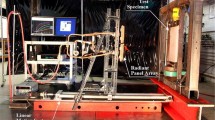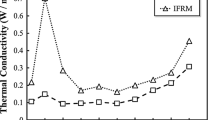Abstract
The U.S. Bureau of Mines constructed a facility in the multiple-entry section of its Bruceton Experimental Mine to evaluate the fire endurance of mine stoppings. The test stopping (up to 6 ft high by 18 ft wide) is subjected to a 70 min, 75,000 Btu/min liquid fuel tray fire. The stopping and adjacent areas are instrumented with thermocouples and heat flux gauges.
Two 8 in. thick concrete block stoppings and a galvanized steel stopping were evaluated in four tests. A crack developed on the fire-exposed surface of both block stoppings where the flames were most intense. However, the unexposed surface of the stoppings was undamaged and its maximum temperature was about 80°C. The steel stopping retained its structural integrity during the test. The temperature of the unexposed steel surface reached 490°C, but combustible materials located 1 ft from the surface did not ignite. Heat energy transmitted across the steel stopping was approximately halved when a 3/4 in. thick coating of construction plaster was applied to its fire-exposed surface. All stoppings prevented the passage of flame and smoke.
Similar content being viewed by others
References
U.S. Code of Federal Regulations, Title 30—Mineral Resources; Chapter I—Mine Safety and Health Administration, Department of Labor; Subchapter O—Coal Mine Safety and Health; Part 75—Mandatory Safety Standards, Underground Coal Mines, 30 CFR 75.316-2(b), p. 510 (1988).
Huntley, D. W., R. J. Painter, J. K. Oakes, D. R. Cavanaugh, & W. G. Denning, Report of Investigation, “Underground Coal Mine Fire, Wilberg Mine,” I.D. No. 42-00080, Emery Mining Corporation, Orangeville, Emery County, Utah, United States Department of Labor, Mine Safety and Health Administration (1987).
Luzik, S. J., “Protection of Aluminum Overcast Constructions Against Fire,”Fire Technology 24 3 pp. 227–244 (1988).
Nagy, J., H. G. Dorsett, Jr, & A. R. Cooper, “Explosibility of Carbonaceous Dusts,” BuMines RI 6597, Pittsburgh Research Center, U.S. Bureau of Mines, P.O. Box 18070, Pittsburgh, PA 15236, 30 pp. (1965).
Luzik, S. J., “Performance of a Steel Stopping Exposed to a Flammable Liquid Test Fire,” Industrial Safety Division, Bruceton Safety Technology Center, Mine Safety and Health Administration, Report No. 100-86 (1986).
Luzik, S. J., “Performance of Selected Coatings Applied to Polystyrene Block Walls under Simulated Mine Fire conditions,”Fire Technology 22 4 pp. 311–328 (1986).
Author information
Authors and Affiliations
Rights and permissions
About this article
Cite this article
Ng, D., Lazzara, C.P. Performance of concrete block and steel panel stoppings in a simulated mine fire. Fire Technol 26, 51–74 (1990). https://doi.org/10.1007/BF01040190
Issue Date:
DOI: https://doi.org/10.1007/BF01040190




